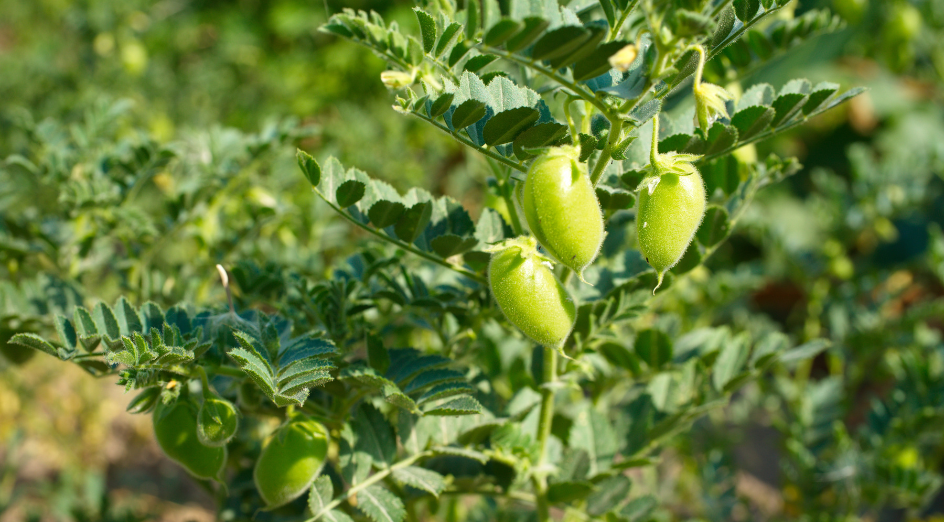In a novel application of pioneering accelerated-Single Seed Descent (aSSD) technology developed at The University of Western Australia, the gene pool of domesticated chickpeas has been successfully diversified using genetics sourced from wild chickpea taxa.
A population of 800 chickpea lines bred with enhanced genetic diversity are now publicly available at the Australian Grains Genebank as a result of investments by UWA and the Grains Research and Development Corporation (GRDC).
The project provided a solution to the main obstacle holding back both chickpea breeding and the crop’s wider adoption across different growing zones: namely, chickpea’s overly narrow diversity that has limited the crop’s environmental adaptiveness and resilience.
Dr Janine Croser and her research team developed the aSSD, which is a complete plant growth system in which duration of exposure to light and the light’s wavelength is managed in ways that induces plants to flower and mature sooner than normal.
 Image: Chickpea pods growing on a plant in the field.
Image: Chickpea pods growing on a plant in the field.
The system also includes methods to germinate immature seed directly in soil, the ability to miniaturise plant size plus protocols to optimise growing conditions (including stringent hygiene standards) that result in low plant loss across generations.
The platform can process large numbers of breeding lines in a small, controlled-environment space using multi-shelf racks each with their own LED lights.
About 50 thousand legume genotypes have been processed through the aSSD facility on behalf of Plant Breeding Australia and Chickpea Breeding Australia breeding programs.
Dr Croser’s team worked with UWA School of Agriculture and Environment’s Dr Judith Lichtenzveig, Dr Maria Pazos-Navarro and Simone Wells to successfully recruit novel genetics from wild relatives of chickpeas and diversify the gene pool available to breeders.
This breakthrough was achieved within a pre-breeding program that generated hybrids between elite cultivars and wild Cicer echinospermum material collected internationally through a GRDC investment led by the CSIRO.
The aSSD platform was then used to process the hybrid material into genetically stable and fertile in-bred lines suitable for use in trait discovery work.
Dr Lichtenzveig said the practical details of growing the wild material had to be resolved, including issues relating to seed dormancy, pod shattering, plants not growing upright and flowering time differences.
“Once we had those issues resolved, the whole pre-breeding process under the LED lights proved extremely routine and reliable,” they said.
“We were able to bring the domesticated and wild plants together and make the crosses entirely within the aSSD platform.”
In the process, Dr Lichtenzveig got a close-up look at the fertility barriers that prevent a free-flowing exchange (or recombination) of chromosomal material between domesticated and wild genomes.
They are now keen to apply the learnings by restarting crosses between the hybrid population to capture even more genetic diversity.
“The efficacy of the aSSD platform means we can look to better overcome hybrid infertility and capture up to 96 per cent of the genetic diversity of the wild species with a series of back crosses that will only take one year to complete,” Dr Lichtenzveig said.
“Those timeframes mean that achieving meaningful breakthroughs is possible within the timeframe of one PhD project.”
The new chickpea population with its enhanced genetic diversity is being typed at the level of crop performance traits, both by the UWA team and CBA breeding program.
Already the aSSD-derived domestic-wild hybrid populations contain numerous trait characteristic with likely important applications.
Dr Croser and Dr Lichtenzveig are now looking to evaluate the population in its performance given early sowing practices within Western Australian soil types and to a depth of up to 25 centimetres (to survive dry growing conditions).
There are also phenological traits, such as plant height and flowering time, that are being looked at to optimise the number of pods set by new germplasm.
This story has been adapted from an article first published in the March-April edition of GRDC Groundcover.
Media references
Rosanna Candler (Communications Officer, The UWA Institute of Agriculture) +61 08 6488 1650
Dr Judith Lichtenzveig (UWA School of Agriculture and Environment) +61 08 6488 1233
